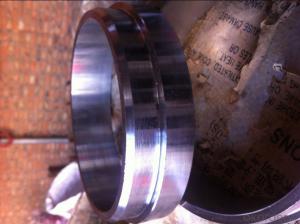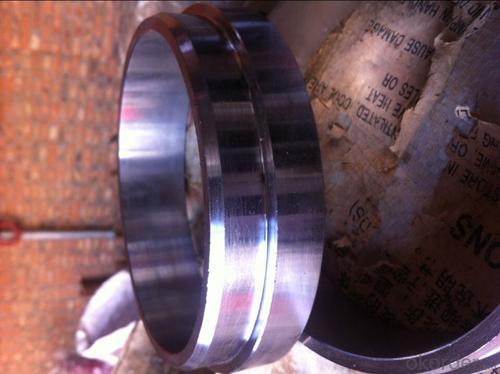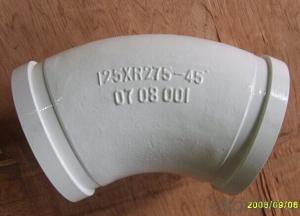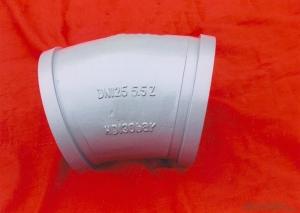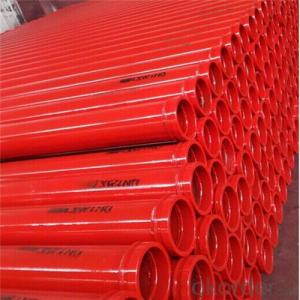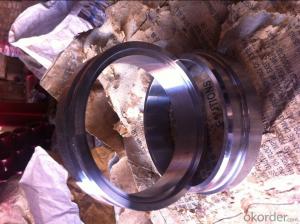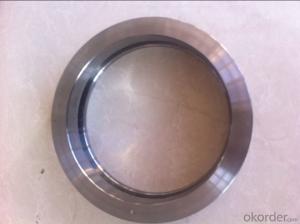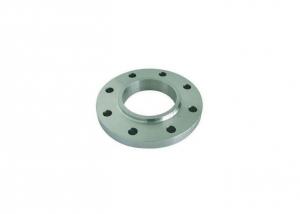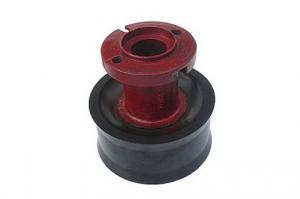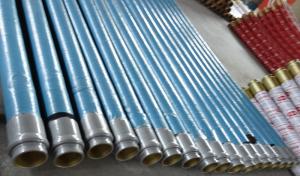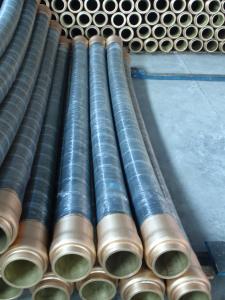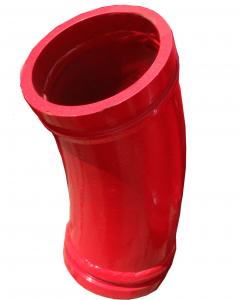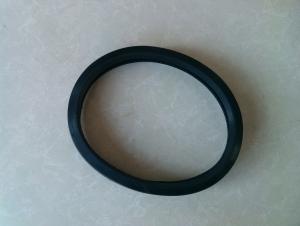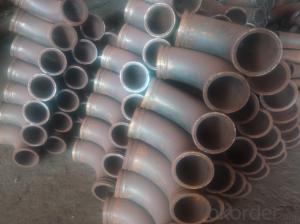SCHWING single side flange dn 125 width 35mm
- Loading Port:
- Tianjin
- Payment Terms:
- TT or LC
- Min Order Qty:
- 100 set
- Supply Capability:
- 5000 set/month
OKorder Service Pledge
OKorder Financial Service
You Might Also Like
Product Description:
Product Name: Concrete Pump Flange
1. Specification of Concrete Pump Flange
Materials: Steel 20
Inner Diameter: 125mm
Notes: total series of concrete pump elbows for different brand concrete pump(PUTZMEISTER, SCHWING, CIFA, SANY, ZOOMLION, IHI, KYOKUTO Etc)available from us.
2. Application of Concrete Pump Flange
Our concrete pump elbows have been successfully exported to many countries from 1998, Our main markets asbelow: Middle East, Southeast Asia, America, Brazil, Italy, Russia, South Africa etc
Aiming at the largest concrete pump parts manufacturer, and reliable, professional supplier in China, we can
supply concrete pump elbows, delivery pipes, casting or forging couplings, end rubber hoses, rubber pistons,
tungsten wear plates, delivery cylinders, and other hydraulic parts, one stop service for your concrete pump
parts and accessory business.
3. Package and Delivery of Concrete Pump Flange
Every 60pcs put in one seaworthy wooden box, and 20 boxes in one 20feet container.
Optional wood materials: veneer wood or other wood.
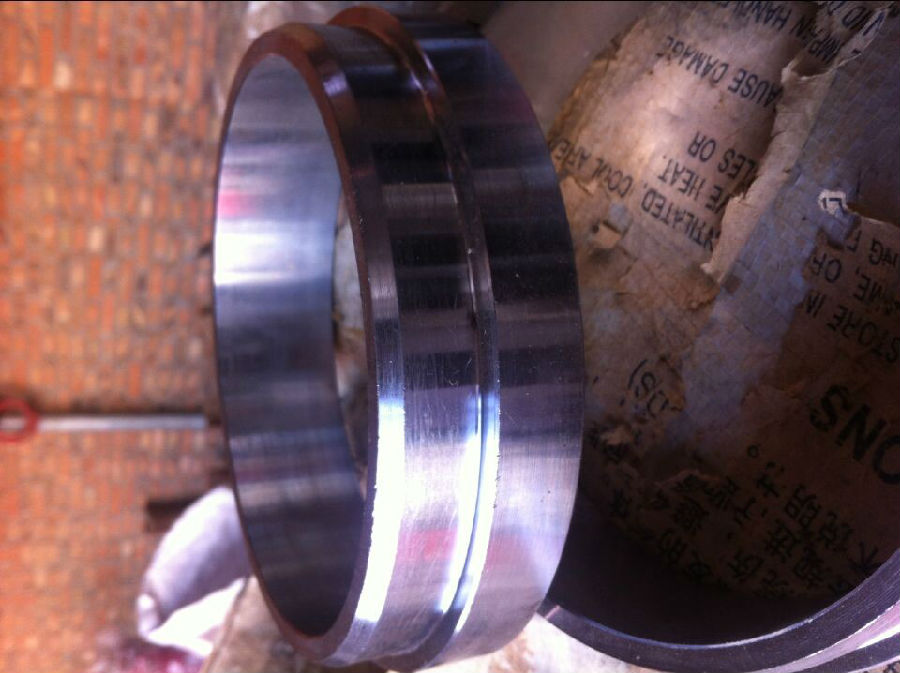
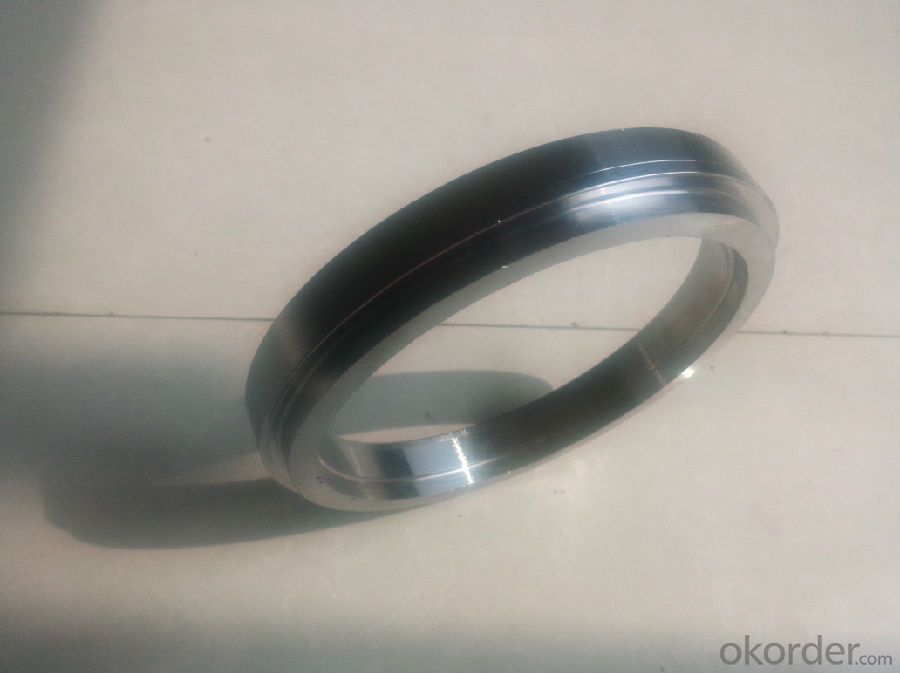
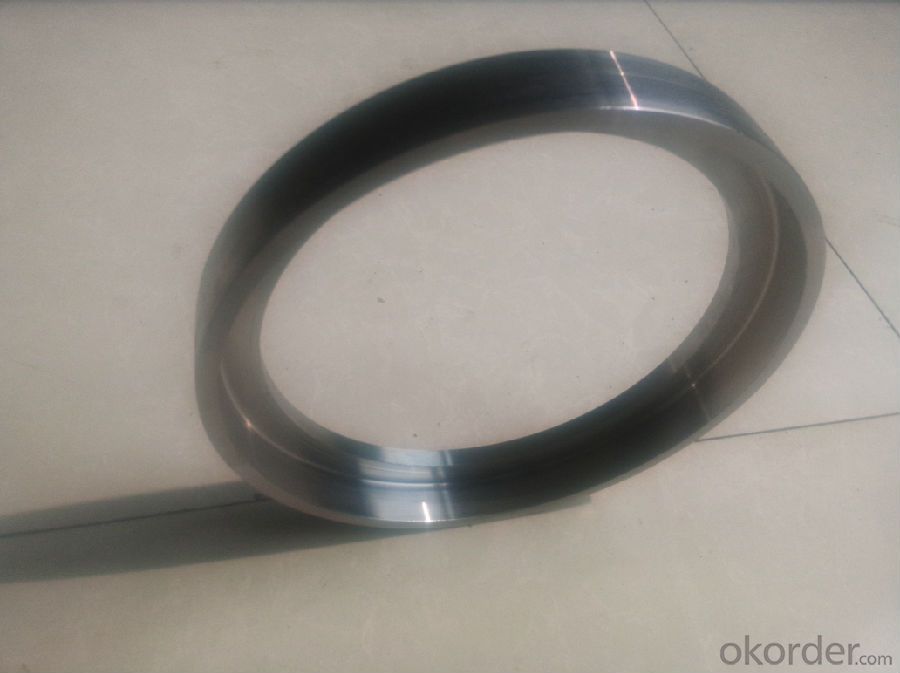
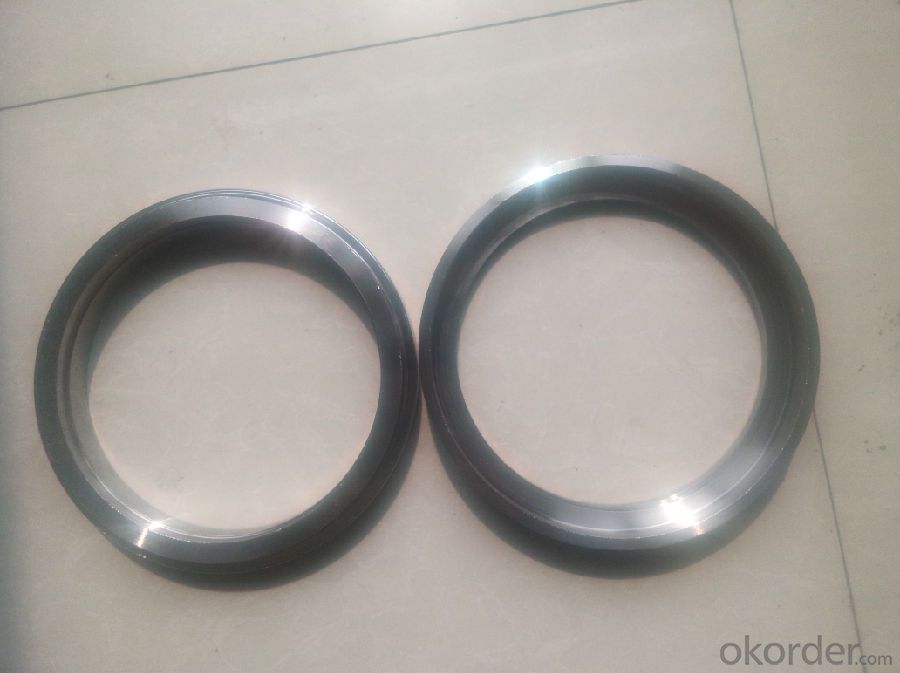
- Q: Are there any specific training or certifications required for handling and installing concrete pump spare parts?
- Handling and installing concrete pump spare parts necessitates specific training and certifications. Given the specialized nature of the equipment and the potential risks involved, individuals must undergo appropriate training and obtain relevant certifications. One must first acquire a comprehensive understanding of concrete pumps' functioning and components. This knowledge can be gained through extensive training programs offered by equipment manufacturers, industry associations, and vocational schools. These programs cover topics such as pump operation, maintenance, troubleshooting, and safety protocols. Furthermore, depending on jurisdiction or industry standards, specific certifications may be necessary. For instance, the American Concrete Pumping Association (ACPA) provides the ACPA Operator Certification, which requires individuals to demonstrate their proficiency in concrete pumping equipment, including the handling and installation of spare parts. Obtaining these certifications ensures that individuals possess the necessary knowledge and skills to handle and install concrete pump spare parts safely and efficiently. It also aids in complying with industry regulations and standards. It is crucial to note that the specific training and certification requirements may vary based on the region, industry, and type of concrete pump utilized. Therefore, it is advisable to consult local regulations and industry guidelines to ensure adherence to the requisite training and certification requirements for handling and installing concrete pump spare parts.
- Q: What are the different types of concrete pump hopper pins?
- There are several types of concrete pump hopper pins, including snap pins, lynch pins, and clevis pins. These pins are used to secure the hopper to the pump and ensure it stays in place during operation.
- Q: What are the specifications for concrete delivery pumps?
- The pressure of each safety valve of the hydraulic system of concrete pump shall comply with the requirements of the manual, and the user shall not adjust the change
- Q: Are there any specific guidelines for the installation of hopper components or agitators in concrete pump spare parts?
- Concrete pump spare parts have specific guidelines for the installation of hopper components and agitators. These guidelines aim to ensure the equipment's proper functioning and safety. Here are some key guidelines to consider: 1. Manufacturer's instructions: Carefully read and understand the manufacturer's instructions for installing hopper components and agitators. These instructions provide specific details and steps for installation. 2. Use the right tools: Utilize appropriate tools and equipment as recommended by the manufacturer. This includes employing the correct size wrenches, bolts, and other necessary tools for the installation process. 3. Clean and level surface: Prior to installation, ensure the surface is both clean and level. This promotes proper alignment and functioning of the parts. 4. Check for damages or defects: Conduct a thorough inspection of the hopper components and agitators for any damages or defects prior to installation. If any issues are found, address them before proceeding with the installation. 5. Align and position correctly: Adhere to the manufacturer's recommendations for aligning and positioning the hopper components and agitators. Improper alignment may result in malfunctioning or premature wear of the parts. 6. Secure all connections: Ensure that all connections, such as bolts, nuts, and clamps, are securely fastened according to the manufacturer's instructions. Loose connections can lead to accidents or damage to the equipment. 7. Test the equipment: After installation, it is crucial to test the equipment to ensure proper functioning. Follow the manufacturer's guidelines for testing and make any necessary adjustments if required. 8. Regular maintenance and inspection: Once the hopper components and agitators are installed, it is vital to regularly inspect and maintain them. This includes cleaning, lubricating, and replacing any worn-out parts as recommended by the manufacturer. By adhering to these guidelines, you can ensure the correct installation of hopper components and agitators in concrete pump spare parts, promoting efficient operation and prolonging the equipment's lifespan.
- Q: How long does it take to receive concrete pump spare parts after ordering?
- The time it takes to receive concrete pump spare parts after ordering can vary depending on several factors. It is important to note that the availability of the specific spare parts you need and the location of the supplier can significantly impact the delivery time. In general, if the spare parts are readily available and in stock, you can expect to receive them within a few days to a week. This assumes that the supplier has a streamlined order processing system and prompt shipping arrangements. However, if the spare parts are not in stock, it may take longer to receive them. In such cases, the supplier may need to order the parts from a manufacturer or source them from a distributor. This could add additional lead time to the delivery process, ranging from a few weeks to several months, depending on the availability and sourcing process. It is advisable to check with the supplier or manufacturer before placing the order to get an estimate of the delivery time. Factors like the supplier's location, transportation mode, and any potential customs or logistics delays should also be taken into consideration. To expedite the delivery process, some suppliers may offer expedited shipping options at an additional cost. This can be beneficial if you need the spare parts urgently. Overall, the time it takes to receive concrete pump spare parts after ordering can vary, but being proactive, communicating with the supplier, and planning ahead can help ensure a smoother and quicker delivery process.
- Q: What is the function of a concrete pump hopper grate handle?
- The main purpose of a handle on a concrete pump hopper grate is to manually control the opening and closing of the grate. The grate is an essential part of the pump as it allows concrete to enter the pumping system. By using the handle, the operator can adjust the position of the grate in order to control the flow of concrete and prevent any large debris or foreign objects from entering the system. This is crucial for ensuring the smooth operation of the pump and maintaining the quality of the pumped concrete. Additionally, the handle provides easy access to the grate for maintenance and cleaning purposes. Overall, the handle on the concrete pump hopper grate plays a crucial role in regulating the flow of concrete and ensuring the efficiency and reliability of the pumping process.
- Q: Are there any specific guidelines for the storage and handling of concrete pump spare parts during transportation?
- Concrete pump spare parts must be stored and handled according to specific guidelines during transportation to ensure safety and efficiency, as well as minimize the risk of damage or loss. To begin, it is crucial to package and protect the spare parts properly. This entails using suitable materials like cardboard boxes, bubble wrap, or foam padding to prevent any physical harm during transit. The spare parts must be securely packed to prevent any movement or shifting during transportation. Furthermore, it is advisable to clearly label the packages with the contents and any specific handling instructions. This will aid transport personnel in correctly handling the spare parts and avoiding mishandling or confusion. Moreover, it is essential to select a trustworthy and experienced transportation service provider who specializes in delicate and sensitive items such as concrete pump spare parts. They should possess the necessary equipment, such as pallet jacks or forklifts, for safe handling and movement of the spare parts. During transportation, it is vital to ensure that the spare parts are loaded and secured properly in the transport vehicle. This may involve using straps, ropes, or other securing devices to prevent any movement or shifting of the packages. Regarding temperature control, it is important to consider the specific requirements of the spare parts. Some parts may be sensitive to extreme temperatures and necessitate special handling or climate-controlled transportation. Consulting with the manufacturer or supplier of the spare parts is crucial to determine any specific temperature or climate requirements. In conclusion, adhering to these guidelines will guarantee the secure and safe transportation of concrete pump spare parts, reducing the risk of damage or loss and ensuring their readiness for use upon arrival at their destination.
- Q: What is the first generation pumping technology of concrete pump?
- The machine assembly is simple and the production cost is low, but the electrical control is complex
- Q: How do I troubleshoot common problems with concrete pump spare parts?
- To troubleshoot common issues with concrete pump spare parts, it is important to approach the task systematically. Here are a few steps that can assist you in identifying and resolving problems: 1. Start by observing the symptoms and pinpointing the specific problem you are facing. These may include leaks, reduced pumping efficiency, abnormal noise, or power failure. 2. Examine the pump's hoses, pipes, and valves for any clogs or blockages that may impede the flow of concrete. Remove any debris or obstructions you come across. 3. Inspect the wear parts, such as the pump's pistons, seals, or gaskets, for signs of wear and tear, cracks, or damage. Replace any worn-out components when necessary. 4. Check for any air leaks that may affect the pump's performance. Inspect the fittings, connections, and seals for signs of air leakage. Tighten loose fittings or replace faulty seals as required. 5. Ensure that the lubrication system is functioning properly. Lack of lubrication can cause friction and damage to the pump's moving parts. Add lubricant if needed. 6. Verify the electrical connections if you encounter power failure or electrical problems. Look for loose or damaged wires and connections. Repair or replace any faulty components. 7. Consult the manufacturer's manual for valuable troubleshooting information specific to your concrete pump spare parts. Refer to the manual to understand the recommended maintenance procedures and troubleshooting steps. 8. If you are unable to identify or resolve the issue on your own, it is advisable to seek professional assistance. Contact a qualified technician or the manufacturer's customer support for further guidance and support. Always remember that regular maintenance and proper usage of concrete pump spare parts can help minimize the occurrence of problems.
- Q: What are the advantages of using OEM (Original Equipment Manufacturer) concrete pump spare parts?
- Using OEM (Original Equipment Manufacturer) concrete pump spare parts offers several benefits: 1. Quality Assurance: OEM spare parts are made by the same company that produces the original equipment, ensuring that they meet the same high-quality standards as the original components. By using OEM parts, the concrete pump will perform optimally with minimal risk of breakdowns or failures. 2. Compatibility: OEM spare parts are specifically designed to fit perfectly with the original equipment. They are built to exact specifications and dimensions, allowing for seamless integration with the concrete pump. This compatibility ensures proper and efficient functioning of the parts. 3. Reliability: OEM spare parts undergo extensive testing by the manufacturer to ensure their reliability and durability. This reduces the likelihood of premature failure or wear, resulting in reduced downtime and maintenance costs. The reliability of OEM parts also minimizes the risk of accidents or injuries caused by faulty equipment. 4. Warranty Coverage: Many OEM spare parts come with a manufacturer warranty, providing protection against defects or failures. This warranty gives customers peace of mind and assurance that they are investing in high-quality components. In case of any issues, the manufacturer typically provides support and assistance. 5. Technical Support: OEM manufacturers usually offer technical support and assistance to customers using their spare parts. This support is invaluable for troubleshooting issues, providing guidance on installation or maintenance, and optimizing the performance of the concrete pump. Non-OEM parts may not offer the same level of support. 6. Long-Term Cost Savings: While OEM spare parts may have a higher upfront cost compared to non-OEM alternatives, they often prove to be more cost-effective in the long run. Their superior quality and reliability result in fewer breakdowns, reduced maintenance expenses, and extended equipment lifespan. Using OEM parts also helps maintain the resale value of the concrete pump. In conclusion, the advantages of using OEM concrete pump spare parts include quality assurance, compatibility, reliability, warranty coverage, technical support, and long-term cost savings. By choosing OEM parts, users can ensure smooth and efficient operation of their concrete pump while minimizing risks and maximizing their investment's return.
Send your message to us
SCHWING single side flange dn 125 width 35mm
- Loading Port:
- Tianjin
- Payment Terms:
- TT or LC
- Min Order Qty:
- 100 set
- Supply Capability:
- 5000 set/month
OKorder Service Pledge
OKorder Financial Service
Similar products
Hot products
Hot Searches
Related keywords
